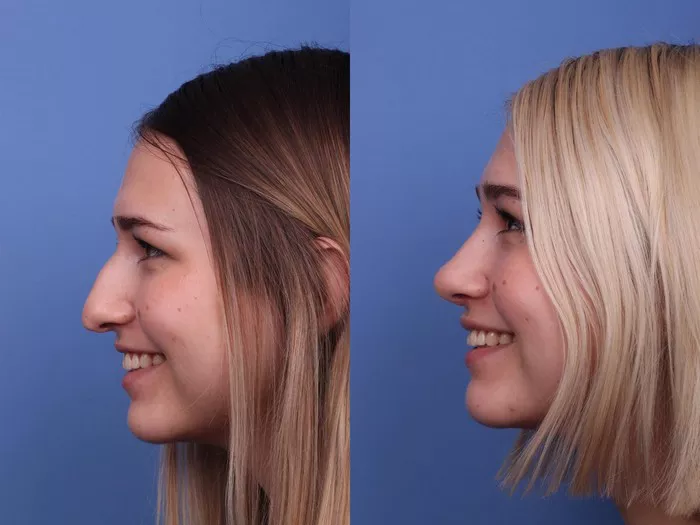Rhinoplasty, commonly known as a nose job, is a transformative cosmetic procedure that aims to enhance the shape and proportion of the nose. Patients undergoing this surgery often embark on a journey to achieve facial harmony and boost their confidence. One of the key aspects that preoccupy the minds of those considering rhinoplasty is the timeline for witnessing the visible outcomes of the procedure. In this comprehensive guide, we delve into the intricacies of rhinoplasty recovery, exploring the stages and factors that influence how long it takes to see the results of rhinoplasty.
The Immediate Post-Operative Period: Initial Changes You Can Anticipate
Following rhinoplasty, patients experience an immediate change in the appearance of their nose. However, it’s crucial to recognize that these changes are often obscured by post-operative swelling and the presence of surgical dressings. The initial days and weeks post-surgery constitute a crucial phase in the healing process, where patience becomes paramount. While the immediate results are noticeable, the true refinement of the nose’s appearance evolves gradually over time.
Navigating Swelling and Bruising: The Early Weeks
Swelling and bruising are natural consequences of rhinoplasty and play a pivotal role in shaping the recovery timeline. During the early weeks, patients should expect visible swelling around the nasal region, including the eyes and cheeks. The extent and duration of swelling can vary among individuals, influenced by factors such as surgical technique, individual healing tendencies, and the complexity of the procedure performed. Understanding the transient nature of this swelling is essential as it obscures the final outcome and can evoke anxiety in patients eager to witness the full impact of rhinoplasty.
Removing the Veil: When Swelling Subsides
As the initial post-operative swelling subsides, typically within the first few weeks, patients begin to catch glimpses of the refined nasal contour taking shape. However, it’s crucial to note that residual swelling persists, concealing the ultimate results. While noticeable improvements emerge during this phase, complete resolution of swelling can take several months. Surgeons often counsel their patients to be patient and realistic in their expectations, emphasizing that the final, unobscured results of rhinoplasty are a gradual revelation.
Defining the Nasal Tip: A Pinnacle of Patience
The nasal tip is a focal point of rhinoplasty procedures, often requiring meticulous adjustments to achieve the desired aesthetic. Patients eagerly await the definition and refinement of the nasal tip, a process that unfolds over an extended period. The nasal tip’s transformation is intricately linked to the resolution of swelling, and patients may find that subtle changes continue to manifest even a year or more after surgery. Understanding the prolonged timeline for tip refinement is integral to managing expectations and appreciating the nuanced artistry involved in rhinoplasty.
The Evolution Continues: Long-Term Changes Beyond One Year
While many patients experience substantial refinement within the first year, the journey doesn’t conclude there. Rhinoplasty results continue to evolve over an extended period, and the final outcome becomes increasingly apparent beyond the initial year of recovery. Patients should anticipate subtle changes in the nose’s appearance as residual swelling diminishes completely, and the tissues settle into their permanent state. Embracing the evolving nature of rhinoplasty results underscores the importance of patience and ongoing communication with the surgeon.
Factors Influencing the Timeline: Understanding Variability
Several factors contribute to the variability in the timeline for witnessing the results of rhinoplasty. The complexity of the surgical procedure, the extent of modifications made, individual healing characteristics, and adherence to post-operative care guidelines collectively influence how quickly or gradually the outcomes become evident. Surgeons work closely with patients to set realistic expectations based on their unique anatomical features and procedural nuances, fostering a collaborative approach to the transformative journey.
Navigating Emotional and Psychological Aspects: Post-Operative Support
Embarking on the rhinoplasty journey involves not only physical changes but also emotional and psychological adjustments. Patients may experience a range of emotions as they navigate the evolving appearance of their nose. Establishing a robust support system, including open communication with the surgeon and seeking emotional support from friends and family, proves invaluable during this transformative period. Managing expectations, celebrating milestones, and recognizing the gradual nature of rhinoplasty results contribute to a positive post-operative experience.
Conclusion
In conclusion, the question of how long it takes to see the results of rhinoplasty encapsulates a nuanced and multifaceted journey. From the immediate post-operative changes to the long-term evolution of outcomes, patients undergo a transformative process that extends beyond the physical realm. Patience, realistic expectations, and a collaborative partnership with the surgeon are foundational elements in navigating this journey successfully. As patients witness the unveiling of their refined nasal aesthetics, they emerge not only with a transformed appearance but also with newfound confidence and a profound sense of self.

